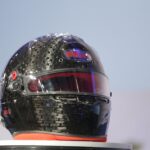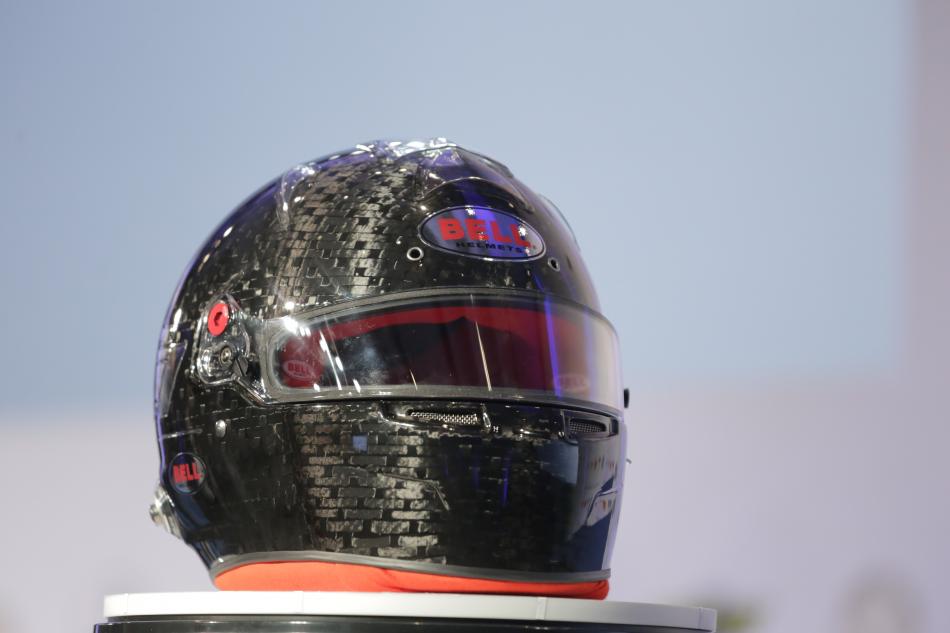FIA Reveals Ultra-Protective Helmet For F1
 |
| 2019 F1 Helmut |
The FIA has released a new top-end helmet standard that will bring about increased protection for racing drivers in all major championships.
This follows over a decade of research to create the ultimate standard for helmet manufacturers to meet to further increase safety.
The latest standard, called FIA 8860-2018, outlines the design and performance requirements that the helmet manufacturers must achieve to provide equipment for the FIA’s top series. It will be mandatory for Formula One from 2019 and in other championships soon after.
These new helmets will offer a number of safety benefits, including advanced ballistic protection, increased energy absorption and an extended area of protection for drivers.
Laurent Mekies, FIA Safety Director, said: “The current top-end helmets are already the safest in the world but the new standard will take them to the next level. It is important for all of our safety research that we continually strive to improve and this is why we are requiring all manufacturers to meet this tougher standard for our championships."
[adinserter name="GOOGLE AD"]Throughout the research program, FIA researchers worked closely with F1 helmet manufacturers such as Stilo, Bell Racing, Schuberth and Arai. It is now up to these manufacturers to deliver the production versions of the new helmets for the 2019 F1 season.
Stephane Cohen, Bell Racing Helmets Chairman, said: “The area of testing will be expanded compared to what we currently enjoy, which means that the overall protection of those helmets could be considered better and as usual the FIA will be at the forefront of helmet protection technology. This will be the most advanced standard in the world without any possible discussion."
Changes based on the new standard include:
- Top of visor opening lowered by 10mm to incorporate advanced ballistic protection that achieves unprecedented levels of safety during impact from debris.
- Extended areas of protection on sides to offer compatibility with latest single-seater headrests and closed car seat-side head protection systems, ensuring energy management is exactly where headrests are positioned.
- Helmet shell construction using advanced composite materials to ensure it is not only tough but also resistant to crushing and penetration.
- Test methods include variable crash speeds to account for different accidents and a range of weights to account for different mass headforms.
Toughened Tests
Under the new FIA 8860-2018 standard all helmets must withstand the following tests:
- Standard impact: Helmet impact at 9.5m/s. Peak deceleration on ‘driver’s head’ shall not exceed 275G.
- Low velocity impact: Helmet impact at 6m/s. Peak deceleration shall not exceed 200G with a maximum average of 180g.
- Low lateral impact: Helmet impact at 8.5m/s. Peak deceleration shall not exceed 275G.
- Advanced Ballistic Protection: A 225g metal projectile fired at 250km/h. The peak deceleration shall not exceed 275G.
- Crush: A 10kg weight falling 5.1 meters onto helmet. Lateral and longitudinal tests. The transmitted force should not exceed 10 kN.
- Shell penetration: A 4kg impactor dropped onto helmet at 7.7 m/s.
- Visor penetration: Air rifle fires 1.2g pellet at visor. Pellet must not penetrate the interior of the helmet.
- Visor coating: Transmitter test to ensure G and vision is not significantly changed or distorted.
- Retention system: Roll-off test and dynamic test to ensure strength of chin strap and its attachments.
- Visor coating: Transmitter test to ensure coloration and vision is not significantly changed or distorted.5m/s. The peak deceleration shall not exceed 275G.
- Chin guard crush: Hammer hits chin guard and measures ability to keep impact away from the head.
- FHR mechanical strength: Test to ensure high strength of attachment points for Frontal Head Restraints.
- Projection and surface friction: Test to ensure helmet surface uniformity and that friction is minimized. Shell surface also subjected to BARCOL hardness test for resistance to penetration.
- Flammability: Helmet exposed to 790 C° flame; it must self-extinguish once flame is removed.
